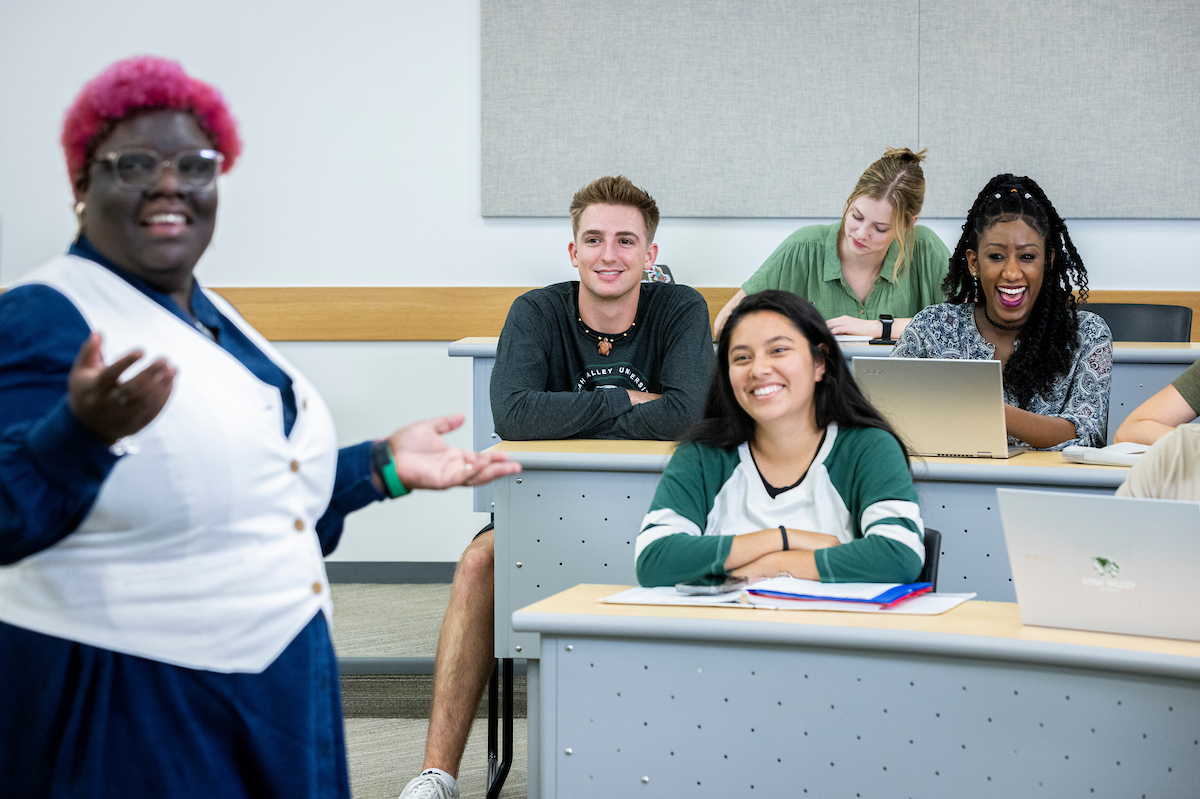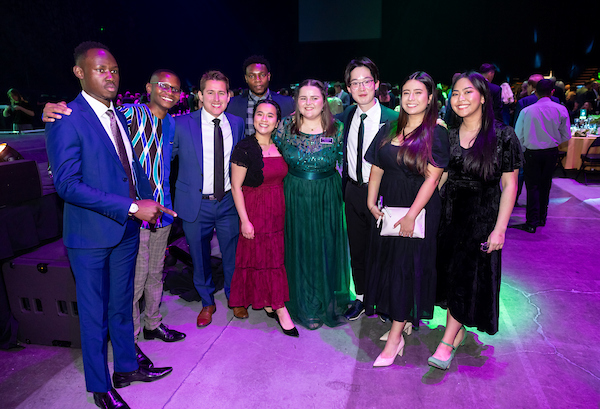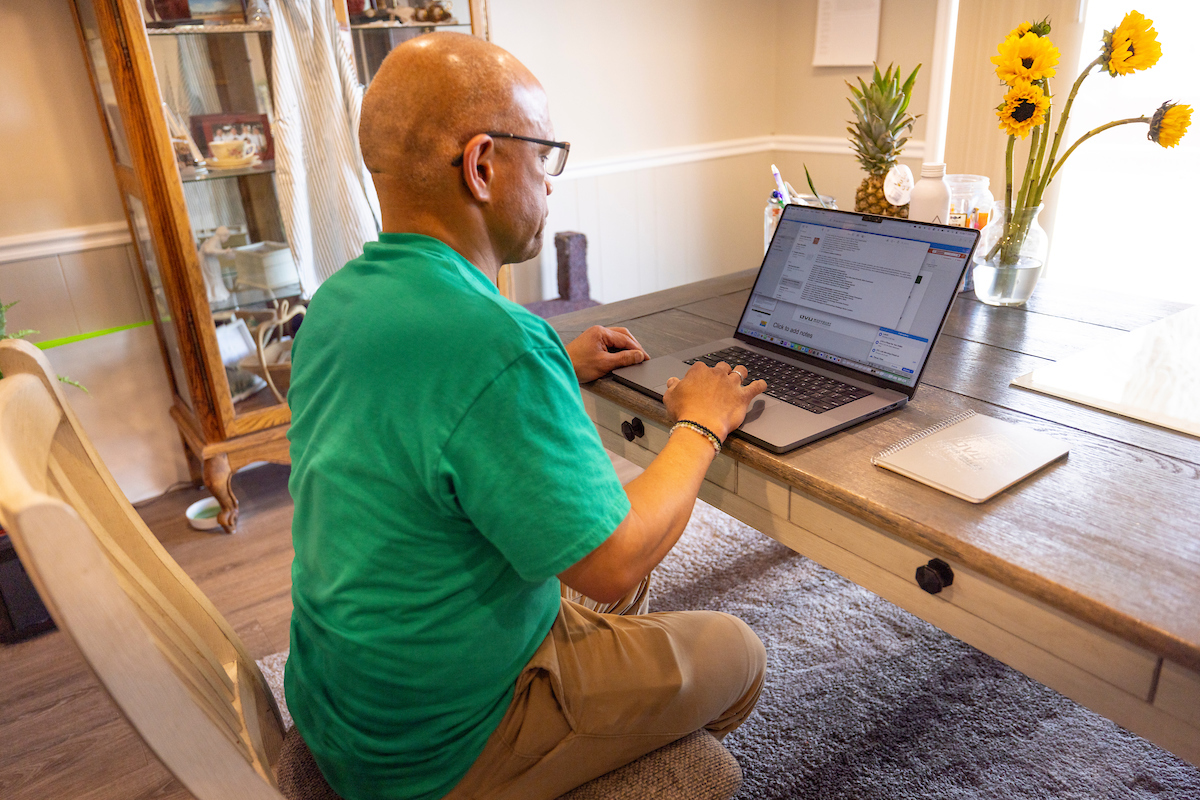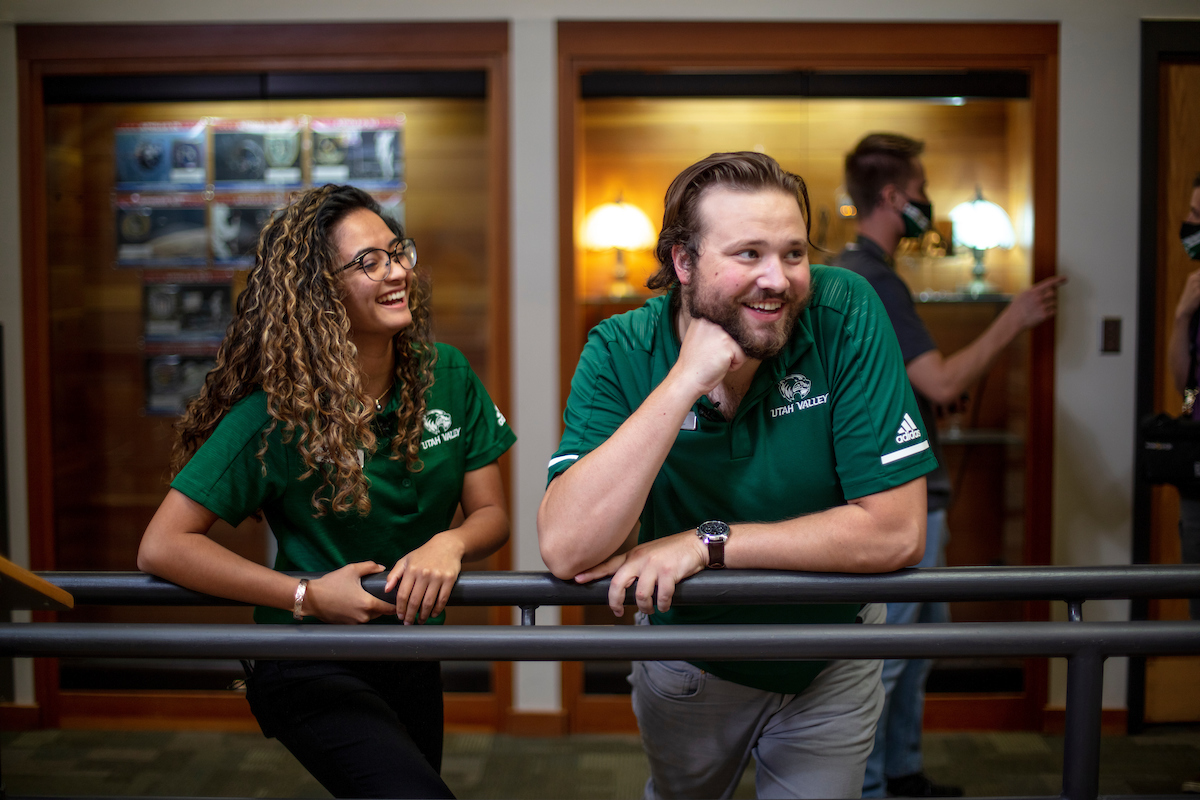Utah Valley University
Engagement Plan 2024-2028

Goal: Continue creating and providing equitable learning opportunities for all students to succeed.
Strategy: Develop and implement curricular and co-curricular programming that encourages the growth of all students while closing attainment gaps.

UVU reviews, assesses, and improves student engagement, learning, and achievement in general education courses. We use the Teaching Effectiveness Model to develop tenure plans, set annual teaching goals, and evaluate teaching effectiveness. We also use the Teaching Observation Form to assess teaching effectiveness through a multi-faceted approach that includes self-assessment, peer assessment, supervisor assessment, student feedback, and review of course materials.
Strategy: Define and advance inclusivity through education and scholarly and creative works.
UVU develops and manages curricula through gap analysis, enrollment disparities, mapping intercultural competency of High Impact Practices, and building educational toolkits and resources for curricular leaders and instructors. Additionally, we support faculty and student scholarly and creative works by securing internal grants for the Office of Sponsored Programs, the Innovation Academy, and individual colleges and schools.
Engagement and inclusion are vital to our growing workforce, community development, and growth, and UVU encourages and supports campus-wide discussions of these facts through workshops and initiatives. We also create and support opportunities for students to work with faculty mentors on meaningful research projects related to various issues in local, regional, and national communities. Additionally, we support faculty in receiving workload credit for research and creative works conducted with students outside regular courses.
Goal: Ensure the campus infrastructure is accessible to the campus community.
Strategy: Build and maintain infrastructure that supports learning in multiple modalities.
UVU works to develop robust and seamless Wi-Fi and cell service in and near all buildings. This allows faculty, staff, and students to engage in teaching and learning opportunities regardless of location. We also continuously improve accessibility features like automatic doors, ramps, and fast elevators, enabling the campus community to traverse the Orem Campus in just 20 minutes, promoting inclusivity and seamless experiences for all.
To further increase accessibility, we work to provide a mix of adjustable furniture and equipment heights in classrooms, easy-to-read signage in hallways, wide aisles during extracurricular events, and more. We also support faculty in designing and implementing accessible, inclusive, and universal design practices that optimize teaching and support learning among all students.
Goal: Create institutional viability and vitality through comprehensive fundraising, continuous improvement, and active, intentional partner involvement.
Strategy: Strengthen internal and external partnerships through collaboration and storytelling.
 UVU partners with internal and external organizations and individuals supporting UVU's
values and goals and provides experiential learning opportunities to all students.
We also strengthen internal and external coordination, cooperation, and collaboration
to create and expand initiatives, activities, and projects that welcome students and
employees from all backgrounds and experiences.
UVU partners with internal and external organizations and individuals supporting UVU's
values and goals and provides experiential learning opportunities to all students.
We also strengthen internal and external coordination, cooperation, and collaboration
to create and expand initiatives, activities, and projects that welcome students and
employees from all backgrounds and experiences.
Every UVU student has a story to tell, and we provide a toolkit for campus storytellers to use when featuring students in stories. This ensures a diverse representation of experiences, backgrounds, and cultures in university storytelling initiatives. We also work with internal and external partners to identify needs related to engagement programming, centers, etc., and work with potential donors interested in various initiatives and connect them with the Institutional Advancement Development Team.
Goal: Strengthen internal and external communication to be more inclusive and engaging.
Strategy: Strengthen communication of UVU’s collaborative efforts around engagement initiatives and student involvement.
 UVU has developed a communication plan to celebrate all backgrounds, experiences,
and cultures on campus and feature UVU community members’ contributions to the engagement
of everyone. By expanding internal and external representation and telling the stories
of our students and employees, we increase awareness and involvement in our programming.
UVU has developed a communication plan to celebrate all backgrounds, experiences,
and cultures on campus and feature UVU community members’ contributions to the engagement
of everyone. By expanding internal and external representation and telling the stories
of our students and employees, we increase awareness and involvement in our programming.
The university is committed to emphasizing its message that UVU is “a place for you” and that the “include” action commitment is a crucial part of our identity. We are committed to invite all students from all backgrounds and experiences, encouraging them to engage fully in our services and programs, just as they are.
To ensure faculty and staff can communicate these messages and commitments, we provide a hub that connects them with resources for campus, classroom, and team inclusion initiatives. The hub supports UVU members and provides learning opportunities for different community members while avoiding any duplication of efforts.
To further communicate our commitments, we support UVU’s participation in national and state-wide inclusion efforts. We also provide representation guidelines within divisions and colleges (realistic vs. aspirational, how to address and avoid tokenism, etc.). Additionally, we offer guidelines for including students of all backgrounds and experiences at external partner and donor events and initiatives, enabling donors and the community to connect with areas of need on campus.
Goal: Assess and craft policies and policy-related documents and data with an equity lens.
Strategy: Utilize national best practices and a data-informed approach to assessing and incorporating equity in university policy and other guidance documents.
 UVU ensures that equity assessment plays a robust role in the policy process by providing
ongoing support and training to the Equity Assessment Committee. We continuously review
policies at all stages with an equity lens and conduct specialized training for drafting
committees, policy owners, shared governance entities, and the Equity Assessment Committee.
We also create and maintain an equity policy review guide that considers language
bias and documents the Equity Assessment Committee's rubric.
UVU ensures that equity assessment plays a robust role in the policy process by providing
ongoing support and training to the Equity Assessment Committee. We continuously review
policies at all stages with an equity lens and conduct specialized training for drafting
committees, policy owners, shared governance entities, and the Equity Assessment Committee.
We also create and maintain an equity policy review guide that considers language
bias and documents the Equity Assessment Committee's rubric.
Goal: Review and ensure employee compensation and labor distribution with an equity lens.
Strategy: Utilize national best practices and a data-informed approach to address employee compensation, merit pay, development, and benefits.
We ensure equitable compensation for all staff and faculty (equal pay for equal work) and regularly assess the student-employee compensation model to create feasible recommendations. To further ensure pay equality, we compare current practices to national best practices and develop feasible recommendations to align with national best practices.
We strengthen and ensure inclusive benefits for all employees. We also strengthen and support equitable awards and recognition systems for employees. Additionally, we provide equitable and inclusive professional development opportunities for all employees by revising, updating, and creating new learning modules that are more inclusive of all divisions, backgrounds, and experiences (athletics, body image, etc.).